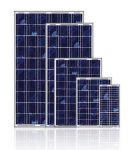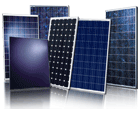Although constantly growing account increasingly turn translates into “green” energy option, but the solar collectors, photoelectric clothed buildings roofs or walls in our country is still quite exotic images. However, the share of renewable energy in popularity not only in the world, but also in Lithuania is growing rapidly. So we want to offer you go SPACE step with the latest technology and electrical energy cook themselves. With solar power plants will be able to buy electricity and sell it to distribution networks, electrical installation costs paid off, you’ll be able to still earn.
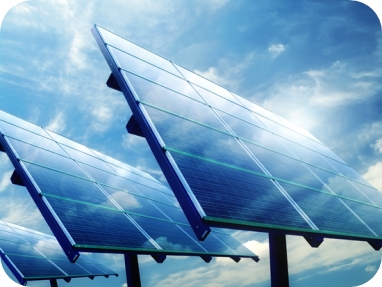
Briefly about solar energy and photovoltaic
The sun – the most powerful source of energy. The theoretical annual potential of solar energy is a thousand times greater than other types of energy potential. Solar energy is used for heat and electricity production. Energy from the sun is made using photocells.
Solar Modules are machines that turn solar energy into electricity. Photocells operates not only in clear weather, but also when cloudy. When rainy, less energy is produced. Photocells are convenient to use because it is relatively easy, it does not take up much space, quiet. We offer the latest generation of photovoltaic modules intended for transmission to the network.
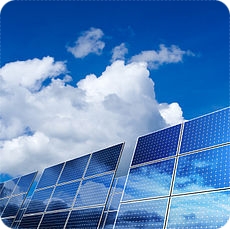
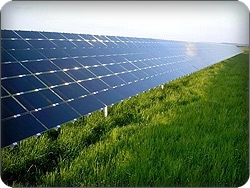
Solar electric energy produced rates
State Prices and Energy Control Commission (NCC) has confirmed the prices at which purchased electricity from solar power plants. The approval of the prices was taken into account by other EU countries, the purchase prices. According to preliminary estimates, 1 kW of installed capacity power plant can produce 860 kWh per year in the eastern part of Lithuania, to 1000 kWh per year – in the western part of the country.
When electrical power:
| up to 30 kWp (terrestrial solar power plants) | price of 1.25 EUR / kWh |
| up to 30 kWp (integrated into the roof solar power plants) | price of 1.60 EUR / kWh |
The tariff rates applied from 2013 onwards. 1 January. Tariff rates are changing every quarter, but after building solar power plant, according to the Lithuanian Electricity Association, will be a commitment that the rate will remain the same for 12 years from the start of the project.
How to install a solar power plant?
Electrical equipping their starts with paperwork. Then the power plant. Needed for the electrical installation of a number of devices, consisting of solar modules, battery pack, battery charging controller, inverter, metering cabinet with the necessary electrical accounting scheme elements and automatic switch, power receivers. System elements of equipment depends on solar energy utilization goals.
Kit system of our company provides the world’s well-known companies such as Schott (Germany), REC (Norway), Bosch (Germany), Yingli (China), Panasonic (Japan), LG (South Korea), Hyundai (South Korea) ( these firms photocells can choose according to special orders), so we can safely assure product quality and durability.
Solar modules
The project planned to use these modules. You can choose one of two options.
Modules Specifications:
| Manufacturer |
ITP (China) |
Progeny Solar (USA) |
| Model | ZDNY – 240060 | PS – 245s |
| Module type |
Polycrystalline |
Polycrystalline |
| Element efficiency | 15,4% | 17% |
| Power | 240 W | 245 W |
| The maximum voltage | 30.2 Vmp | 30.33 Vmp |
| Maximum current | 7.96 Amp | 8.18 Amp |
| Open circuit voltage | 37.7 Voc | 37.35 Voc |
| Short circuit current | 8.38 Asc | 8.44 Asc |
| Power temperature coefficient | 0.5 Pmpp | 0.46 Pmpp |
| Size AxPxG (mm) | 1650x992x45 | 1650x995x50 |
| Weight, kilo | 22.5 | 19 |
| Warranty | 10 years | 10 years |
-
- Solar modules are durable. Productivity given 10 year warranty, 10-year savings will be at least 90% of the initial capacity. After 25 years – no less than 80%.
- Progeny Solar modules:
- It is designed in the United States and manufactured in Europe.
- Cell efficiency of more than 17%.
- The module is laminated Japanese EVA film
- A double anodized aluminum frame.
- Course selection of higher power (-0 Wp to +5 Wp).
- 6 bypass diodes.
Dispensers
Solar Modules mount on brackets. “Perfect Comfort” uses high-quality flat rooftop of 110 holders.
Converters
Photovoltaic modules generate direct current, so the system is necessary for the inverter. It DC electrical energy into the standard voltage and frequency AC power. The table shows two models of converters:
| Manufacturer | Solu Tronic | Solu Tronic |
| Country of production | Germany | Germany |
| Model | SOLPLUS 120 | SOLPLUS 50 |
| The nominal power of | 12 kW | 5 kW |
| Phase | 3 | 1 |
| MPPT | 3 | 1 |
| Maximum efficiency | 98% | 97.5% |
| Resistance to the environment | IP65 | IP65 |
| The communication interface | RS485, Ethernet | RS485, Ethernet |
| The integrated DC disconnector | Integrated | Integrated |
| Warranty | 6 years | 6 years |
| Defective inverter replacement warranty (signing a maintenance contract) | 48 hours. | 48 hours. |
Also still can offer the SMA (Germany) and Fronius (Austria) firms inverters.
Remote data capture system
Remote inverter parameters of the scan will promptly respond to power failures.
Works:
- full documentation management
- projection
- installation
- Solar power sales distribution networks
For what it is worth to build solar power plants?
- Longevity– solar panels are durable, studies have shown that the productivity decline less than 1% per year.
- Ecology – photocells are solar power generating device. Unlike gas, solid fuel or oil product, does not pollute the environment. These batteries are safe, easily recycled.
- Independence – solar panel installation houses and other buildings allows to move away from the common power grid and thus considerable savings – to produce electricity by yourself.
- Ability to install various places –you can install solar power plant on a pitched roof, a flat roof industrial building or greenhouse or pergolas.
- Thrift- as solar power plant owners, you engage in economic activities, e.g. registration of individual activities of tax authorities, on their own behalf to get the connection conditions Lesto networks, as well as the necessary permits Ministry of Energy, issue invoices Lesto for the transfer of power.

